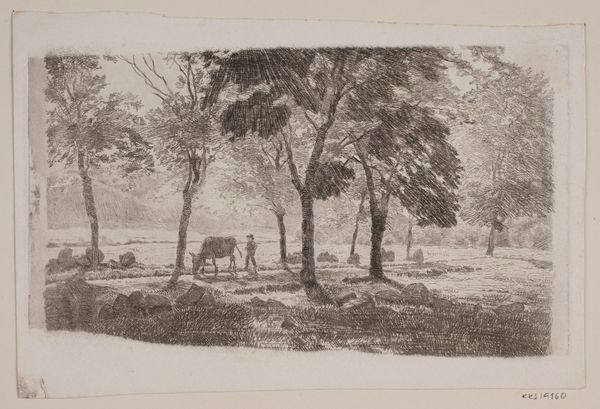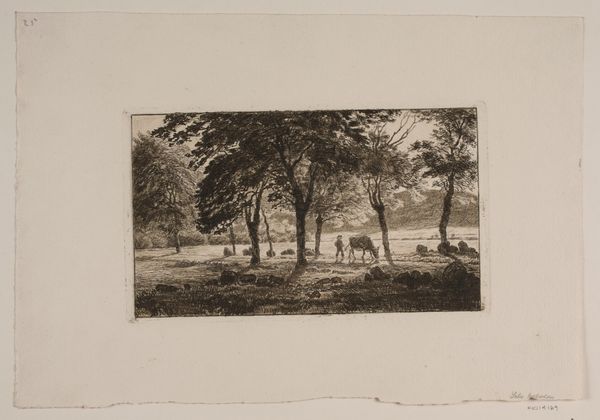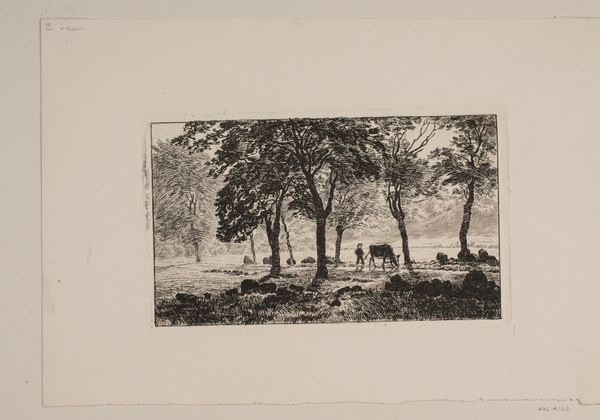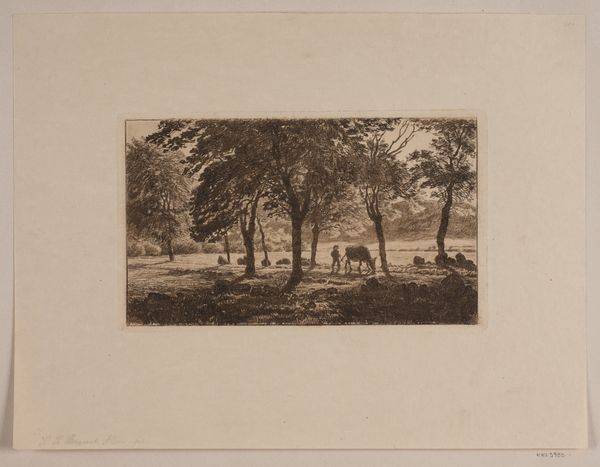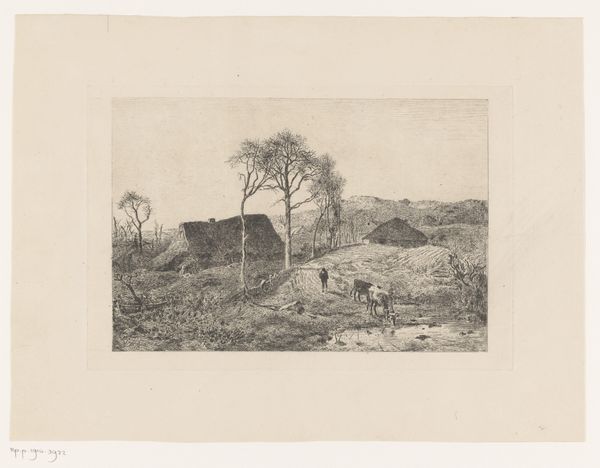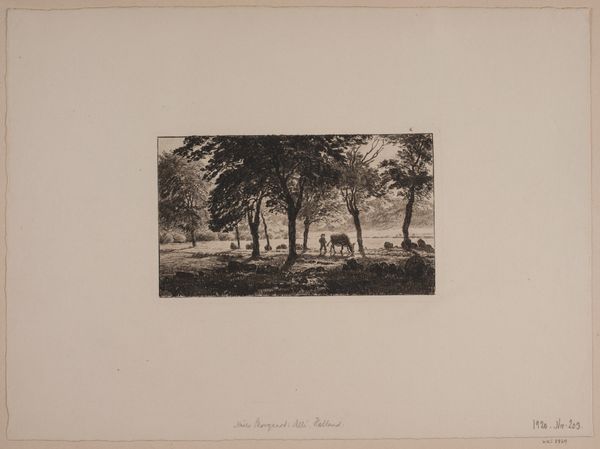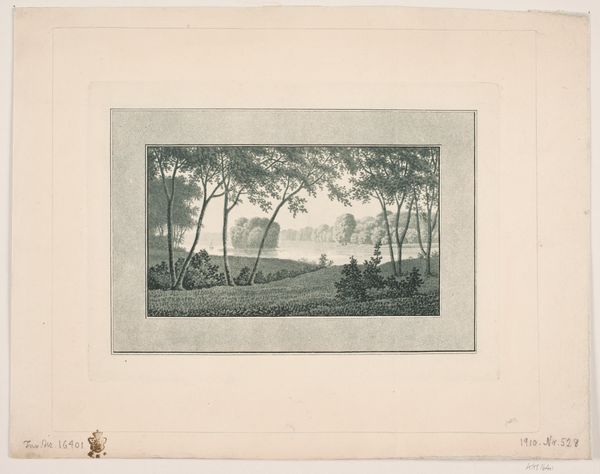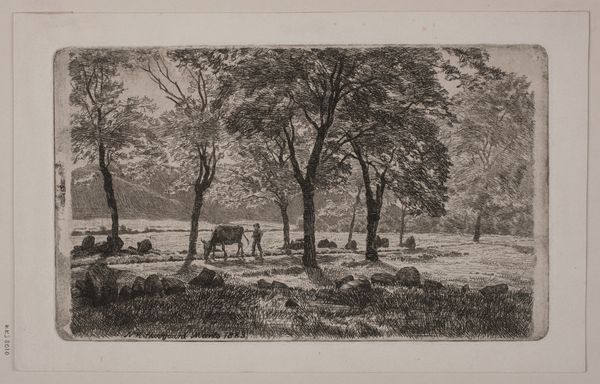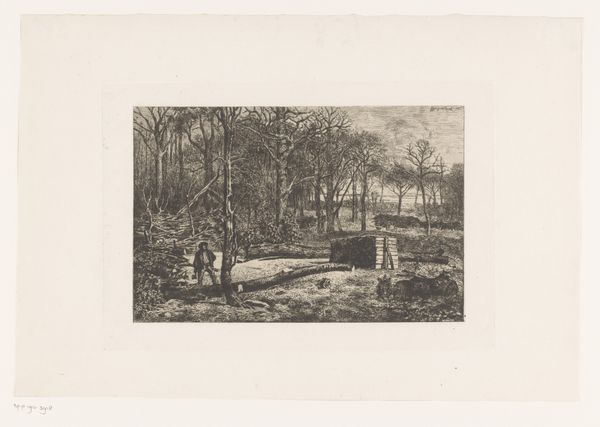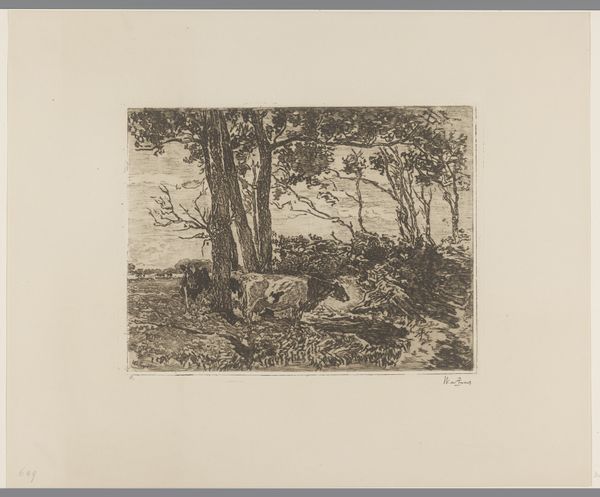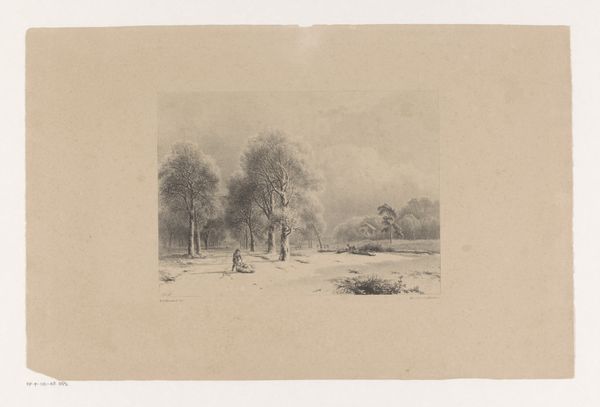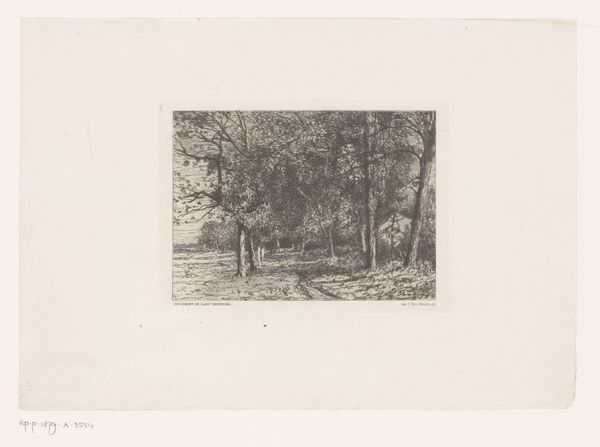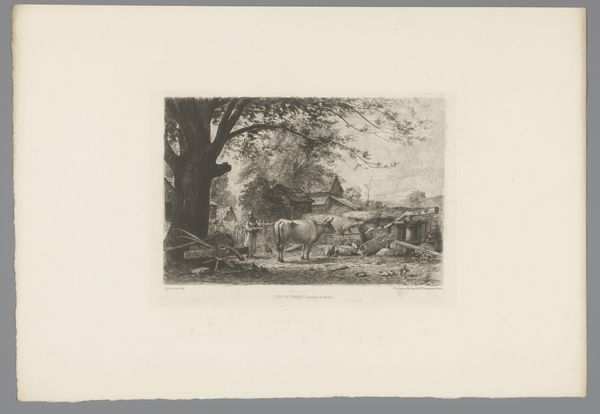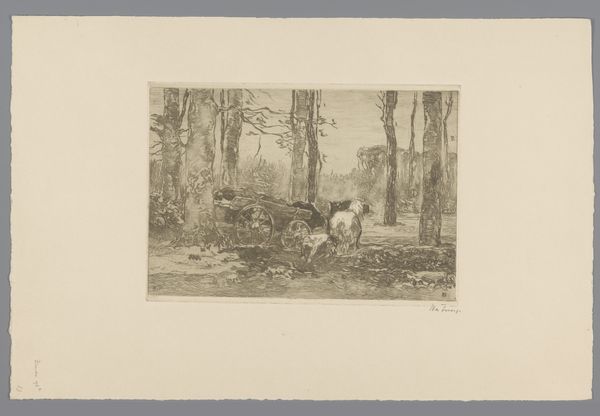
print, etching
# print
#
etching
#
landscape
#
genre-painting
#
realism
Dimensions: 125 mm (height) x 208 mm (width) (Plademål)
Curator: "Alléen," an 1883 etching by Niels Skovgaard, presents a pastoral scene. I'm struck by the composition; it feels quite balanced but also rather melancholic in its muted tones. What are your initial thoughts? Editor: It's beautiful. The etching medium gives it such a unique texture. How might the specific materials and the printmaking process influence how we interpret this scene? Curator: The deliberate act of etching, the labor involved in transferring this image to a plate and then printing it, directs our attention to the means of production. Skovgaard isn't simply capturing a scene; he’s participating in a whole chain of material practices. Does this make you think differently about the rural life it depicts? Editor: Definitely. Seeing it as a crafted object, not just a window onto a landscape, makes me wonder about the intended audience. Was this intended for mass consumption or a more exclusive market? Curator: That's precisely the right question! Printmaking allowed for wider distribution, yet etchings often appealed to a more cultivated taste than, say, a mass-produced lithograph. Considering Skovgaard's social context—who he was trying to reach, and how his work circulated—becomes crucial. Also, observe the recurring element in the scene of natural unhewn rocks being scattered within the shot. This contrasts with more classical artistic sensibilities. Editor: It feels almost like a democratisation of art, taking it out of the exclusive realm of painting. It's interesting to consider how access to art changes the relationship people have with it. Curator: Exactly. The rise of printmaking coincides with burgeoning middle class and an interest in depicting everyday life, even within landscape. This raises questions about labor, class, and the representation of rural communities. Does it seem at odds with that the work of traditional arts or academics at the time? Editor: That's a fascinating way to approach it. Looking at the etching through a materialist lens reveals the complex social and economic factors shaping art production. I appreciate that the traditional separation between “high art” and what constitutes "low" or merely mundane has been made more visible through how it was created, Curator: And by focusing on the material conditions of its creation, we understand art as not just an aesthetic object, but also a product of labor, embedded in a web of social relations. It is a reminder to appreciate that artistic creation comes through labour like any product and commodity in our society, with some elevated unfairly. Editor: Absolutely! This approach gives me new ways to appreciate works of art beyond what immediately meets the eye. Thanks for shining some light on this.
Comments
No comments
Be the first to comment and join the conversation on the ultimate creative platform.
